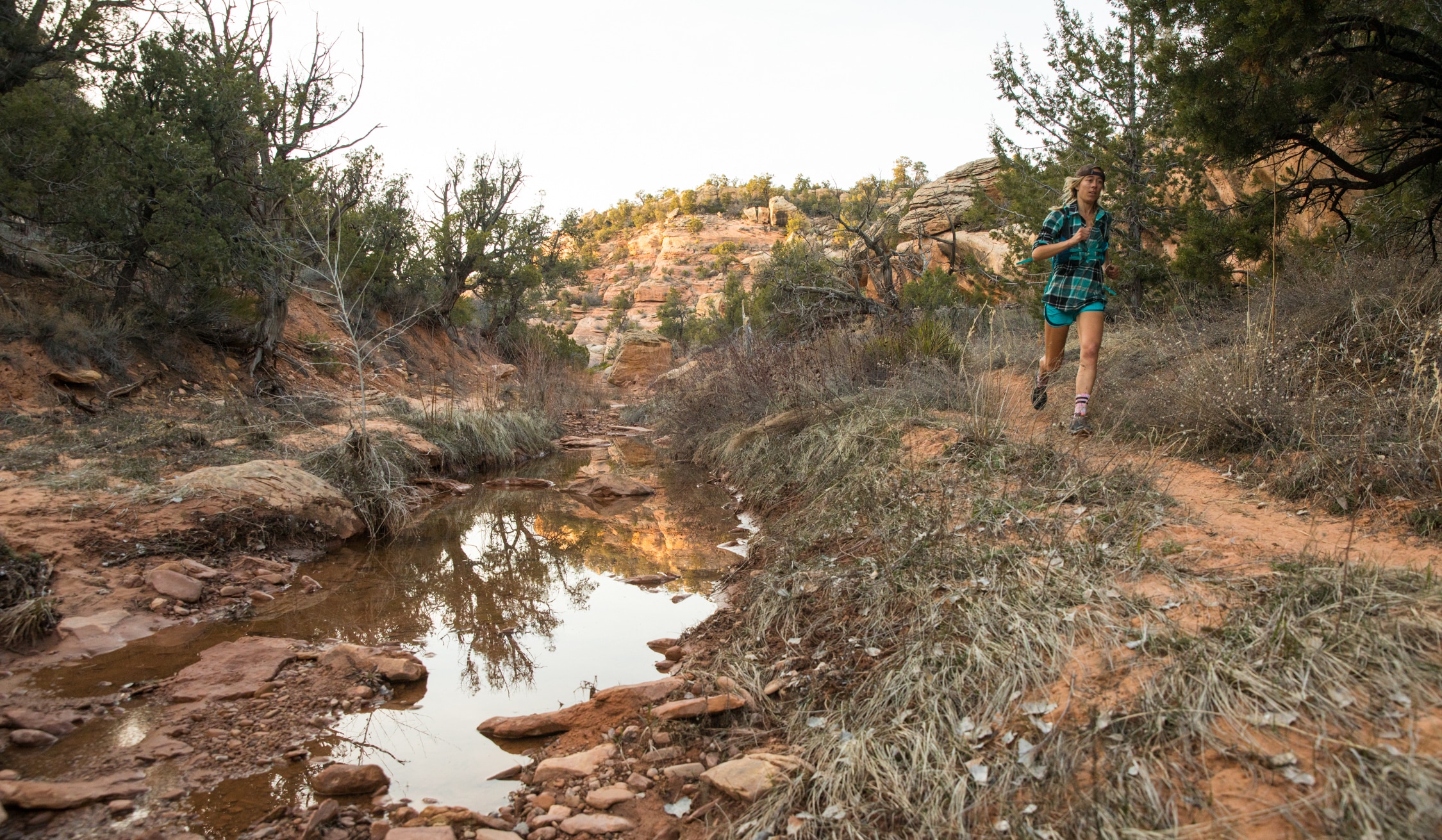One runner’s search for adventure and a fresh start in our newest—and now at-risk—national monument
I’m shivering in the back of my yellow Jeep Wrangler tucked inside two sleeping bags as first light creeps into the snow-covered windows. I embrace the thin eight-degree air as I jump out of the hatchback onto the trail, wearing full ski gear with snow boots (anything to stay warmer), and start running east toward the sunrise. Finally, the sun peeks over the iconic Bears Ears plateau and warms my frozen face. I stop and marvel at this moment before letting out a roar from the depths of my lungs.
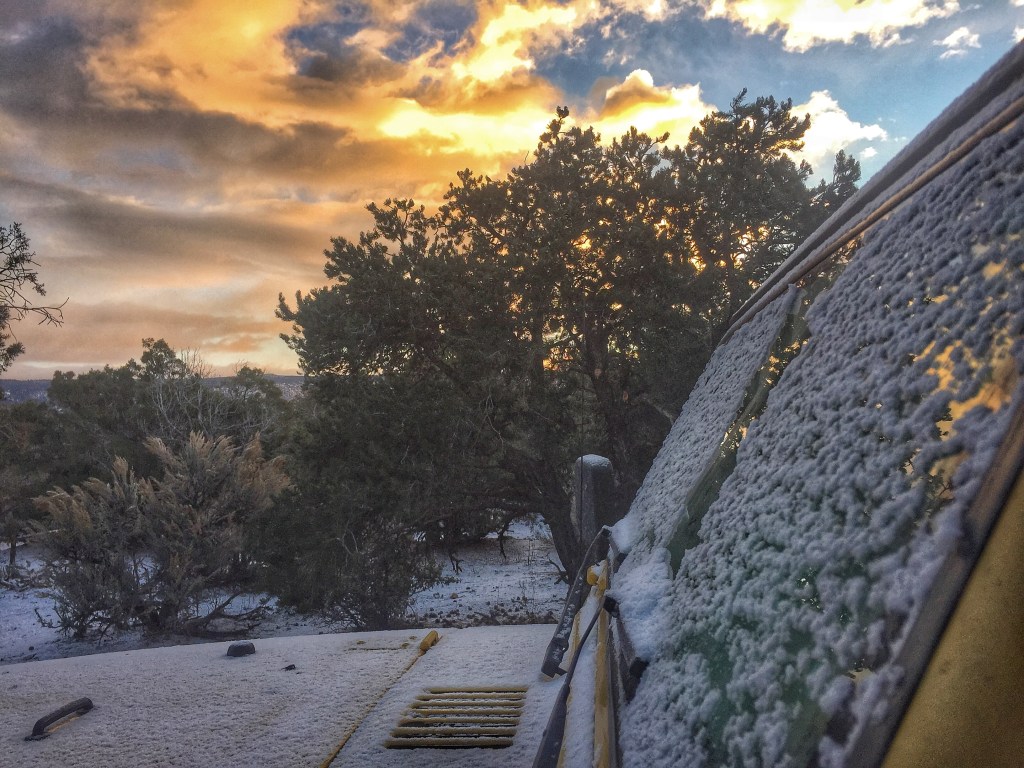
Sunrise in Bears Ears | Photo: Morgan Sjogren
I came to the newly appointed Bears Ears National Monument alone on a personal quest to start my life anew in the midst of a divorce—to clear my head and fill my heart in the wilderness. I chose Bears Ears to experience the beauty and magic of this newly protected area (declared a national monument by President Obama in December 2016) that is now a focal point of a heated public lands debate. The Bears Ears region contains over 100,000 Native American archaeological and cultural sites within its boundaries and is sacred to the Bears Ears Inter-Tribal Coalition (Hopi Tribe, Navajo Nation, Ute Mountain Ute Tribe, Pueblo of Zuni, and Ute Indian Tribe), who not only trace their ancestry to this area, but also regularly return for ceremonies and to connect with their ancestors.
The Navajo people run toward the sunrise in the East every morning to visit the spirits who watch from the sky over their people below.
The Navajo, in particular, utilize running in one of their daily rituals, which I like to think makes Bears Ears—and other sacred Navajo lands—the birthplace of organized running in the United States. According to professional runner and Navajo Sports Hall of Fame inductee Alvina Begay, the Navajo people run toward the sunrise in the East every morning to visit the spirits who watch from the sky over their people below. The runners yell out loud to the spirits for gifts that include strength, wisdom, and the ability to endure hardship.
As a runner, I already draw upon the ritual of my daily runs to give me strength, both physically and mentally, so this Navajo concept resonated deeply with me. The purpose of my trail running on this trip shifted from training for a race to a more spiritual pilgrimage. I wanted to focus on this ritual for personal healing during a challenging chapter in my life—and out of the desire to do something, anything, to help raise awareness and protect public lands for the native people, the plants, and the animals that inhabit them and all who are drawn here to recreate. During that first short sunrise run, I felt like a maniac yelling from the depths of my lungs at the sky above for superpowers and blessings, but then again, not a single person was there to watch. My lungs burned from the thin, icy air as I screamed, letting salty tears freeze across my cheeks. It felt good.
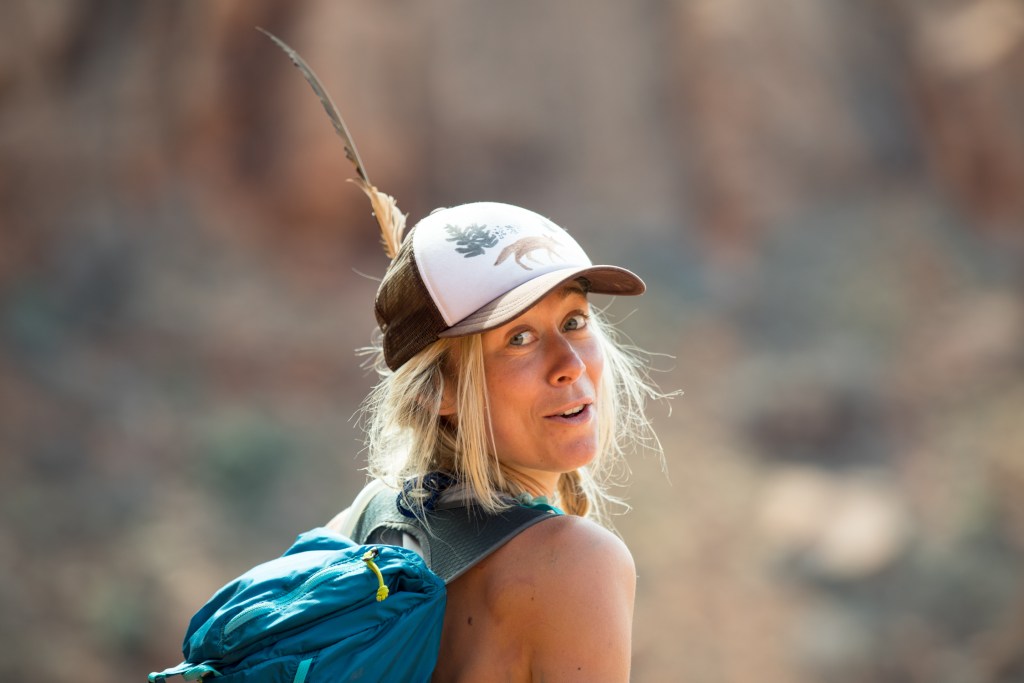
Morgan Sjogren, Bears Ears NM, UT | Photo: Andrew Burr
Feeling strengthened after my sunrise ritual, clouds rolled and dropped snow flurries into my cup of cowboy coffee. While the runs to the East were the focal point of my trip, I wanted to get more mileage while exploring the trails for the remainder of the day. Despite this, I felt my plans for a long adventurous run, seeking ancient ruins, petroglyphs, and the areas quintessential towering geological formations, slipping away from me as the snowflakes floated into the deep canyon bottoms. I opted to drive around a bit to scope out the area for some better weather and stopped my Jeep at a trailhead right off the highway. There, I made my first human contact in over 24 hours: a nice older couple curious to find out what I was doing all alone way out here. I explained that I was just there to run, but that my plans were quickly dissolving along with the sunshine. She smiled at me with her wise eyes and assured me, “That’s the beauty of freedom. There are no rules or plans.”
It was a privilege to feel so small within this massive preserve of wilderness in a quickly shrinking natural world.
And so I laced up my shoes and took off running up the trail to the Bears Ears road, a nicely graded but long and grinding six-mile climb to the saddle of the 8,929- and 9,058-foot plateaued peaks with sweeping views of the entire Cedar Mesa region. As I leaned my body into the steep grade, I felt my heart rate accelerate with the climb. The increasing snowfall eliminated my visibility, and it dawned on me that I might be the only person running the trail at that moment, and in a while. It was a privilege to feel so small within this massive preserve of wilderness in a quickly shrinking natural world.
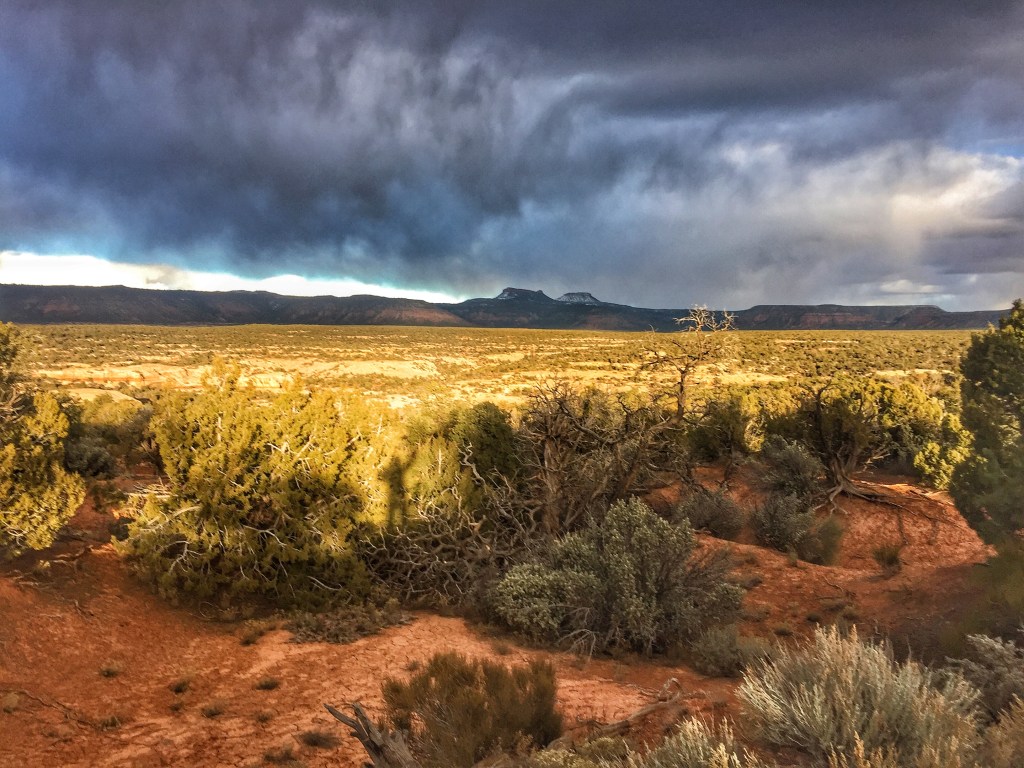
Photo courtesy of Morgan Sjogren
To defend the Bears Ears National Monument designation—or to reverse it—has become a hot-button issue for all sides of the political spectrum. In recent months, we’ve seen hundreds of thousands of people across the country speaking up to protect these iconic places.
As a trail runner, I not only spend a large percentage of my mileage running and racing on public lands, but as a dirtbag “running bum,” public lands are home to my nomadic outdoor lifestyle, and running is my transportation. These are places I rely on to set up basecamp and rest my head for the night before getting out to explore with my feet. Begay’s father, one of the first Native Americans to run the Boston Marathon, began running this way, too. “His family didn’t have a car but he was the best runner in the family, so he was always chosen to run errands on foot. My father was his family’s car,” he says. “It brought me to tears the first time he shared this with me.”
“If you cut down a tree, there must be a purpose. Why do you need the wood?”
It’s natural to want to protect the places that are so deeply ingrained in your livelihood and daily living. I can only relate and process a fraction of what the native people from this region must be feeling, as Bears Ears is not just a plot of land—it is their blood. “Everything has a spirit, the rocks and the trees even,” Begay explains from the Navajo perspective. “If you cut down a tree, there must be a purpose. Why do you need the wood? This deep connection to the land is why so many are drawn to protect these places.”
Running through Bears Ears National Monument allows us to naturally connect with the land and transport through a portal into the roots of civilization on this continent. Ultimately, what we as a country choose to do with places like this will become our history and reality.
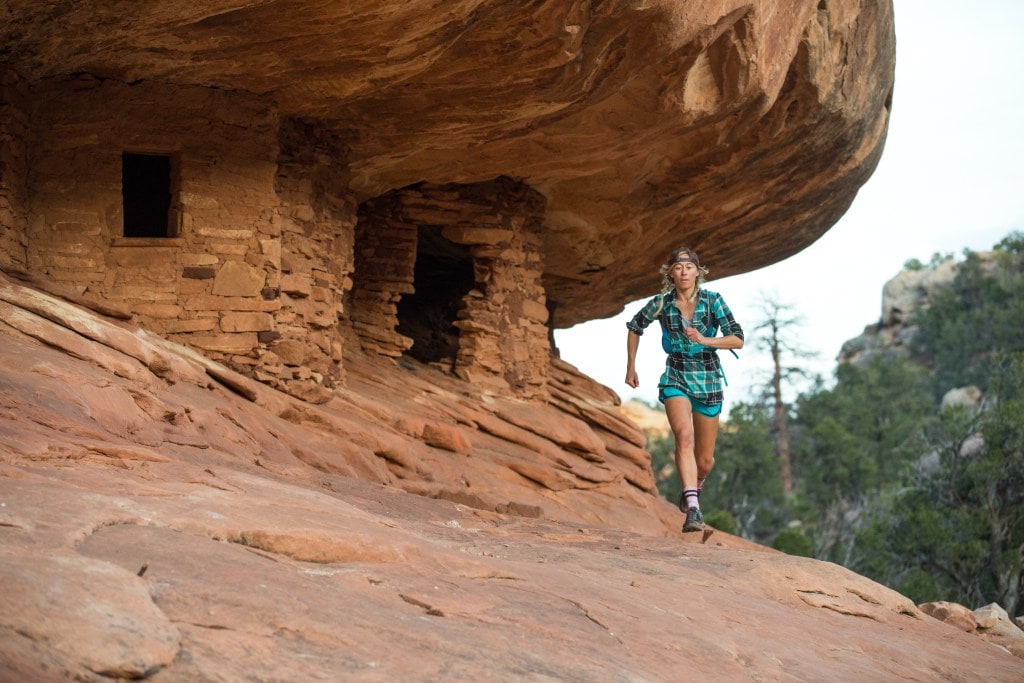
Morgan Sjogren, House of Fire, Mule Canyon, Bears Ears NM, UT | Photo: Andrew Burr
So after my run, I pull over in Blanding for a burrito and to make a few calls to government officials between messy bites dripping with guacamole. “Hi, Ryan [Zinke]. My name is Morgan and I’m calling from just outside Bears Ears National Monument. You’ve got to see this place, it’s beautiful and wild. It belongs to the people and animals and plants. We need you to step up and help protect it and other public lands. This is where the meaning of freedom in the USA is defined!”
I wonder what the normal protocol for these types of calls is and hope he enjoys my enthusiasm amidst the millions of voicemails he gets every day.
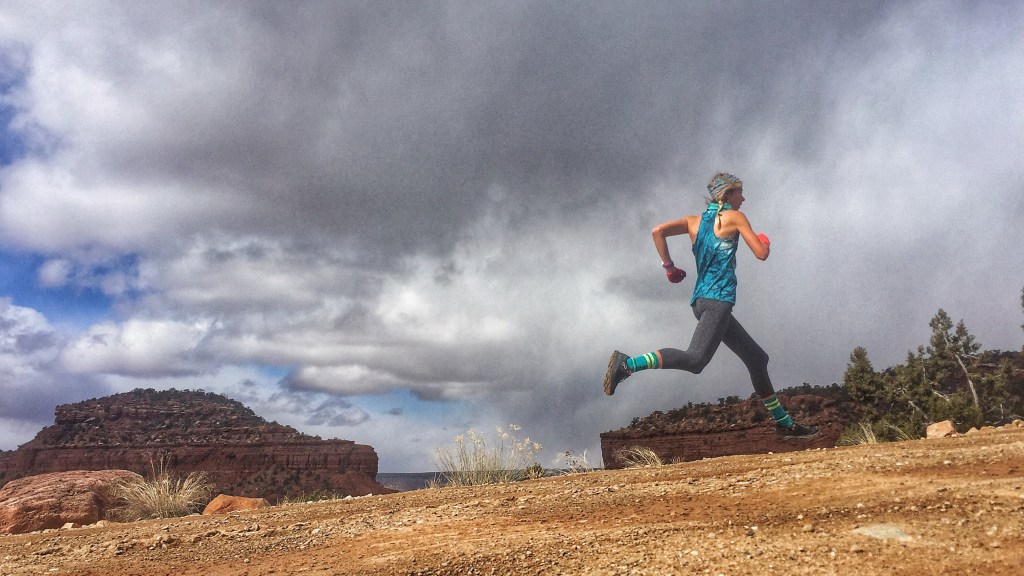
Photo courtesy of Morgan Sjogren
Exactly two weeks later, I returned to southeast Utah for a photo shoot. I ran the short two-mile trail to the House on Fire ruins, which was completely iced over two weeks prior. As the sun set, I marveled, not only at my return to such a culturally rich area, but also at the deep realization that this place is still very much spiritually alive. The cloudless blue sky, the red sandstone walls, the remnants of ancient dwellings, the springs trickling up from canyon bottoms, the beetles drawing micro-trails across the silky sand.
“She is the guardian to the North, healer and watcher over the land and its peoples. She is Mother Bear.”
The Bears Ears formation itself is known to tribes as Bear Maiden, and, according to my friend and archaeologist R.E. Burrillo, it’s historically where they sent women to heal. This concept is explained best in his piece for Archaeology Southwest Magazine:
“Traditional narratives about Bears Ears always cast it in a feminine light, and among the Navajo, at least, it is a place associated specifically with feminine healing energy. As Descheenie explained, women who experience the traumas of, for example, spousal abuse, rape, or miscarriage, seek Bears Ears for healing. This relates in turn to the role of Bears Ears in their sacred geography. Associated with Changing Bear Maiden, the twin monadnocks of Wingate Sandstone—the “ears”—represent the place where her body lies following a heated exchange that erupted after she fell in love with wily old Coyote—hence the correlations with traumas such as domestic abuse. Hers is the place where healing plants and medicines are traditionally procured, especially—though not exclusively—by and for women. She is the guardian to the North, healer and watcher over the land and its peoples. She is Mother Bear.”
And yeah, I’m starting to believe that the spirits of Bears Ears are out there listening if you’re willing to crawl out of your warm tent early in the morning and share your breath with the world. When you forge a deep connection with the wilderness, it can help you heal. Its power can be felt with every cell in your body and transmutes into the space around you. The breeze speaks to you, wildflowers bloom overnight, rivers run by your side and push you along as you see clearly what was hidden in the fog of the previous season—and that’s the type of love worth fighting for.
Editor’s note updated July 10, 2017: The public comment period has closed.
